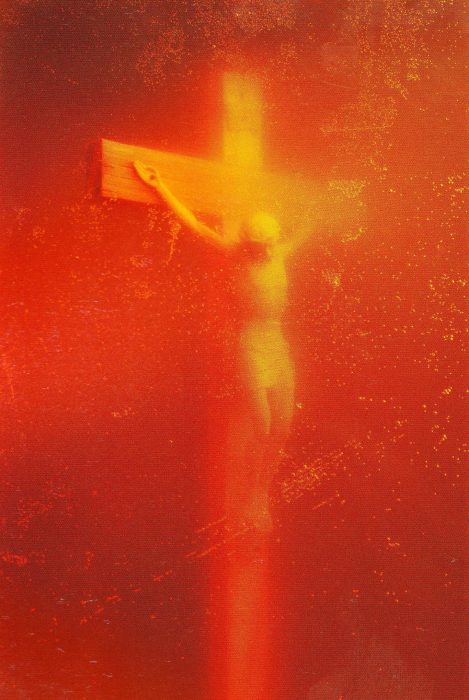Allison and Michael field your questions about art history, tackling some new material to close out the season.
Stay tuned at the end to hear the full version of “Eyes Closed Dance Party” off of Permission to Feel by Civilized Creature. Thank you all for writing in!

“Immersion (Piss Christ)”
Andres Serrano
1987
Renew the Arts is on a mission to see patrons and artists partnered in communities to create art that enriches our lives, shapes our homes, and helps us love our neighbors.
Your support will sustain our team, help us continue to develop our Porchlight network (and web app), and fuel our efforts to inspire art patronage.
Donate



I know a lot of ballet companies that perform a Nutcracker each year just to make money. And you know why? To pay for the stuff that won’t make money, but which they love to do. Nutcracker is usually only one of several productions a year and often the only one that will break even. So much so that when I sat on the Georgia Council for the Arts peer-review panel I was incensed when one company wanted funding for their Nutcracker. It was insulting. If they couldn’t get Nutcracker right enough for it to pay for itself, I could not bring myself to support them in wasting public money.
Record labels are on the record for losing money on a majority of their Jazz music offerings. They use the pop stars that they produce to make up for the loss because they believe in the art form.
That someone can make money doing what they are good at so they can make the stuff that doesn’t make money is not something to deride.
Even at my unarguably lower level of revenue, I am able to allow myself the projects I think are worth participating and don’t have huge financial resources because of the other projects that pay.
Personally, I’m tired of the criticism of “existential” art. It’s as if there isn’t enough art out there. The categorization itself sounds like I’m back in the 70s listening to Schaeffer.
You know, Rembrandt has already been done. Michelangelo has been done. Van Gogh has been done. Bouguereau has been done. Or representational, realistic, and figurative arts have already been done. Romanticism, sublime has already been done. How many more paintings of the Road to Emmaus, or the stoning of Stephan, or the Crucifixion, or Jesus riding a white horse wielding a sword, or heaven, earth, and hell do we need?
We don’t need a metric other than do people respond to the work? Which is the point of making experimental work public. How does one find out if people will respond to one’s work, find a point of relationship if it isn’t made public? Even as I find Kinkade one dimensional sentimentalism, who am I to belittle someone’s response to his work?
I am more sympathetic to Allison’s view of a metric for art, but as they say about stocks—previous performance is not an indicator of future results. To simultaneously answer the teacher’s question, Art history _is_ history, whether local, national, or world history. I agree that history is a good metric. But is only relevant to historical work when we examine the culture within which it was created.
Be faithful. My admonition is if painting three crosses on a hill is what God is really putting on your heart, then do it and do it better than anyone else has done it before. Set the world on fire with it. Be the Lee Krasner of the the expressionist movement (As far as I’m concerned Lee Krasner outdid Pollock, DeKooning, and others of that era—schooled them all)
Joe